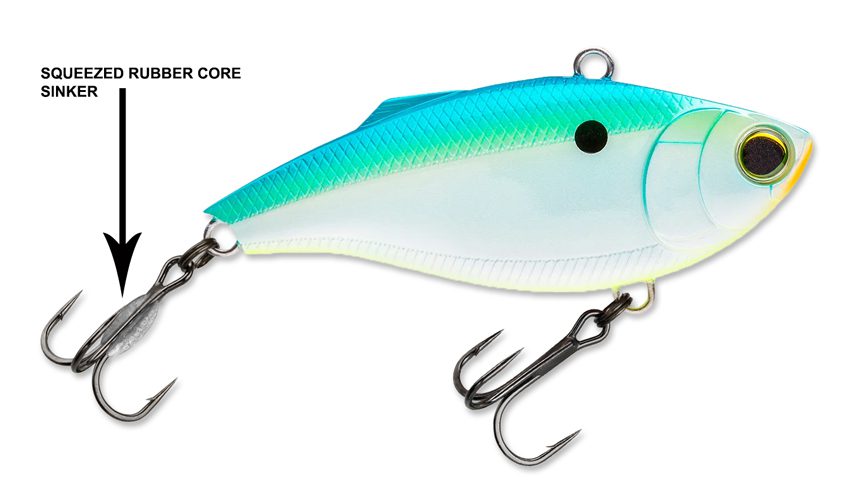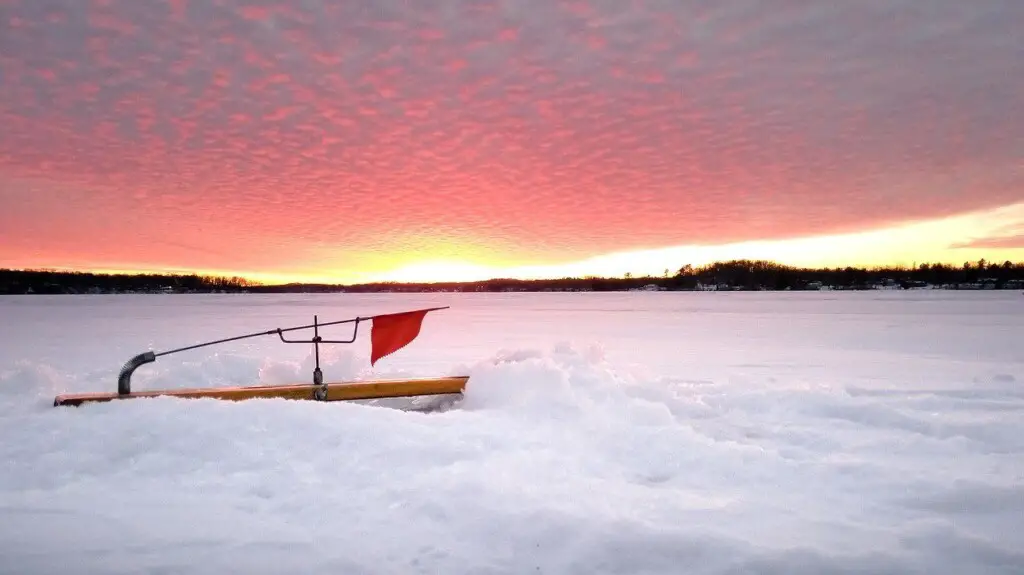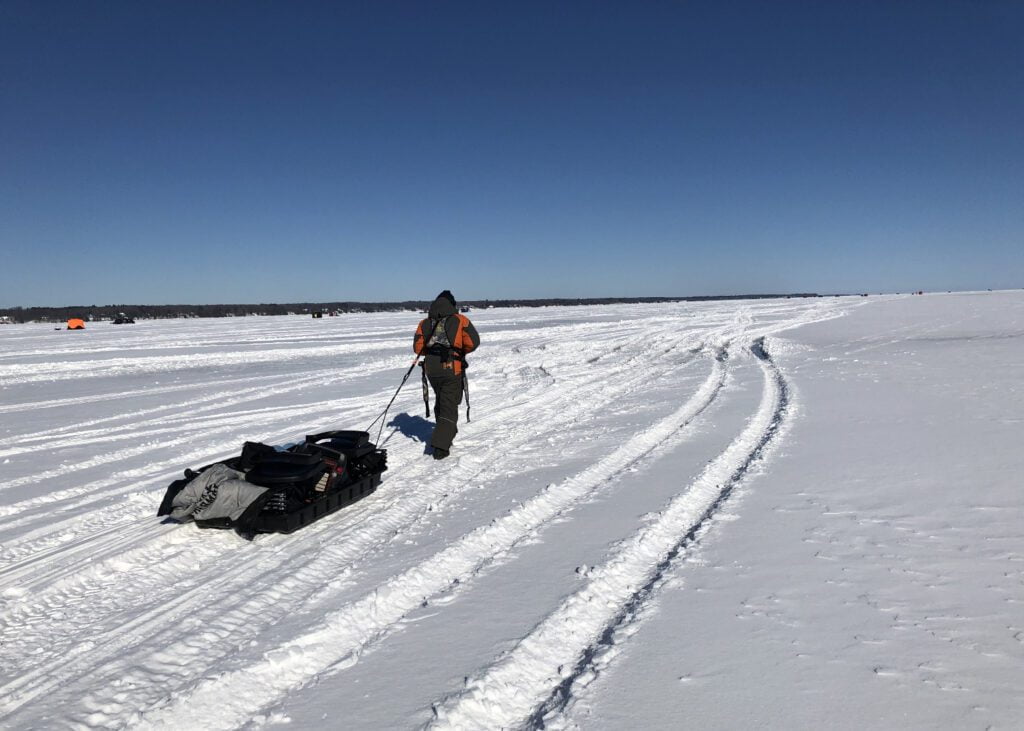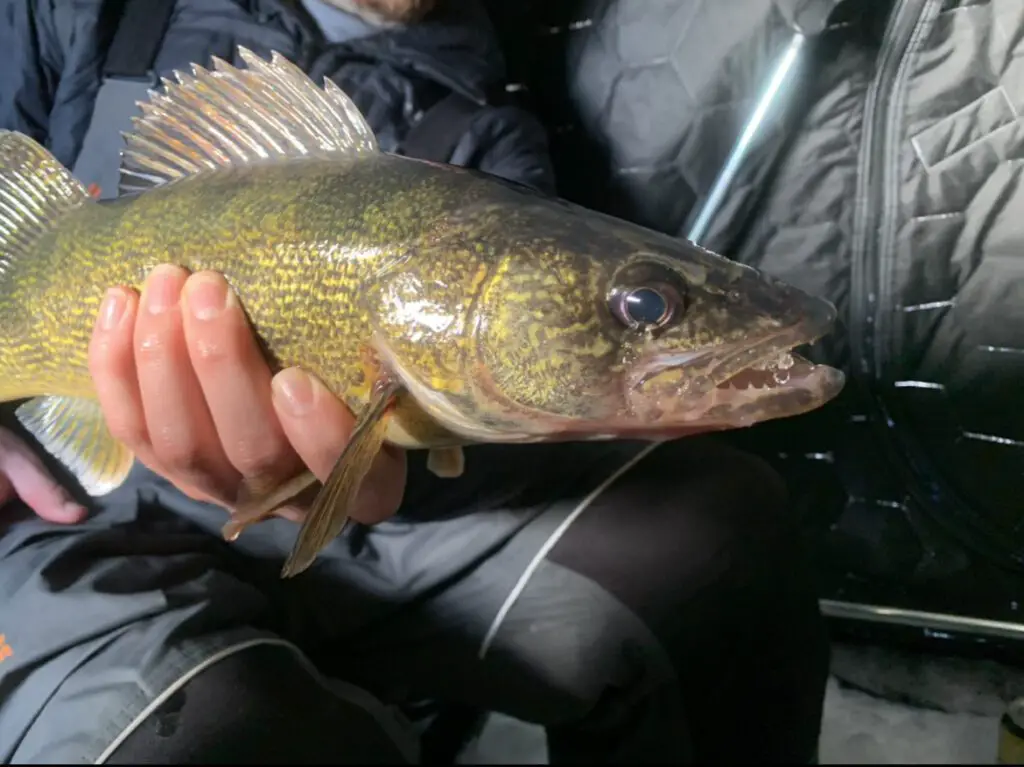Presented by Garmin
Ice fishing is a waiting game. Some of this is the nature of the sport but, oftentimes, it can also be self-inflicted.
So after a collective lifetime of fishing experience, we decided to come up with 5 helpful tips to help things run a bit smoother for you on the ice this season.
In no particular order, here are our top 5 time-saving ice fishing tips!
Tip #1: Transform your lipless crankbaits

This tip from Fish’n Canada’s Angelo Viola is all about fishing Lipless Crankbaits through the ice.
Many are aware that crankbaits, in general, are an excellent tool for open water fishing, but many put them away once the lakes freeze over. We think that is a mistake and believe that Rattlebaits (lipless cranks) need to stay on your ice fishing roster. There is, however, a problem when using a lipless during ice over – they have a tendency to hook themselves and become tangled on your line when jigged vertically.
The reason that these baits tend to do this is that the nose of the bait is designed to face downward while it swims, allowing it to bounce off rocks, sticks, and do all the things that make it such an attractive bait to fish in the spring and summer. To fish it vertically, a small adjustment is sometimes needed.
“Whenever I fish a Lipless Crankbait through the ice,” says Ang, “I always make sure I add some weight to my rear treble hook. This minor adjustment makes all the difference in keeping that back hook off my line when I’m calling in big Bay of Quinte Walleye or Lake Simcoe Lake Trout.”
As mentioned above, Ang adds this weight using a stripped-down rubber-core sinker, however, weighted treble hooks can also be purchased at most tackle shops. Those in a pinch can also achieve the same goal using a simple split shot or some Suspendots placed on the back-end body of the bait.
Tip #2: Avoid the bird’s nest

Tip number two comes courtesy of Pete Bowman and is essential for anyone looking to do some tip-up fishing this year.
Pete says that one of the keys to landing big fish with a tip-up is good line management. Like a fly angler might do on a riverbank, Pete makes sure he is always aware of where his line is when he strips it in after setting the hook.
“There is nothing worse than a bird’s nest of line shooting down towards the ice when a fish decides to take one last run,” says Pete, “or even worse, your brand new braid wraps around your ice scoop, your fishfinder, or even the base of your tip-up. That can get really nasty! It’s a quick way to lose a fish and a quick way to ruin a day.”
To keep his line from tangling, Pete says he makes sure he retrieves it “hand over hand” and places it on the ice in neat(ish) strips. While it may seem tedious, getting in the habit of managing your tip-up line while a fish is on the hook will allow you to spend more time catching fish and less time untying difficult knots.
Tip #3: Drill fewer holes

Originally tucked into our 5 Garmin Fishfinders to Have on Your Ice Fishing Radar article, this tip from Pete Bowman surely warrants a spot on this list.
In that article, Pete lays out an excellent way to scan areas with his portable fishfinder without having to drill holes. He does this by always keeping a bottle of water on him when he is out exploring a lake.
Although the connection between fishfinders and water bottles may not seem obvious, Pete explains that by pouring a bit of water over the ice and placing your transducer in the puddle, anglers are able to see directly through to bottom without ever having to drill a hole. Occasionally, it is even possible to find fish using this method.
Of course, this is much easier on clear, black ice but those with a shovel can still make it work after a bit of snowfall.
Tip #4: Repurpose your tree stand harness

If you are one of those hunters that flock to the ice as soon as deer season closes, that tree stand harness may not need to be put away just yet.
As anyone who has ever pulled a pop-up or flip-over ice hut can tell you, the long walk, hands behind your back, pulling a 75+ pound toboggan is enough of a workout to have you skipping leg day for a year. Furthermore, the short rope that comes standard on most toboggans makes it extremely difficult to take normal steps as the back of your heels seem to constantly find their way under the lip of the sled.
To help make this journey a little less taxing, FishnCanada.com’s Dean Taylor repurposes a tool from his hunting pack and uses a tree stand harness to keep his portable hut a bit farther behind him and take the weight from his arms and lower back.
Since treestand harnesses already come equipped with a long cable and a carabiner clip, this “repurposing” is done by simply attaching the clip to the rope of the sled. Once attached, the harness can be done up as it typically would and your trek can carry on much more comfortably.
For the non-hunters out there who do not have use for one of these harnesses, “sled-pulling harnesses” can also be purchased at some sporting goods stores and homemade renditions can also be made using ratchet straps.
Tip # 5: Cut the head

Our final tip is far from a secret in the world of walleye fishing but can be a game-changer when fishing line-shy or lock-jawed fish.
Live minnows are perhaps the ultimate ice fishing bait, however, the notoriously picky midwinter walleye often finds an issue with even this fool-proof presentation. For whatever reason, popping the head off your minnow seems to solve this problem.
Whether it be the smaller size, the scent, or some other reason, a minnow head on a small jigging spoon seems to be just enough to make those non-committal fish bite and turn those long chases into actual bites.
Nowhere is this more true than on Ontario’s legendary Bay of Quinte, where many ice anglers bypass the live bait approach and skip right to the decapitation.
Have an ice fishing tip of your own that you’d like to see in a future addition? Let us hear it in the comments below!

A few things I like to do for saving time:
>I always bring 2 rods so when I am changing lures or otherwise fiddling with one for whatever reason, I always have a rod actively fishing. Also, have different lures/bait on each rod so I can swap it out in seconds.
>I also drill a few holes right away. So if one hole isn’t producing, I move to the next one without having to drill and wait for the scared fish to return.
>If I forgot to thaw my bait and the shrimp is frozen, and particularly if I am not using a tent, I put a few pieces of frozen shrimp in a sandwich baggie and place it inside my insulated coveralls.
>I tell my friends and family that I won’t be checking my texts if there is cell service. Phone if there is an emergency. Otherwise I am focused on fishing. No constantly checking the phone is a time saver for sure.
Great tips, Kurtis!